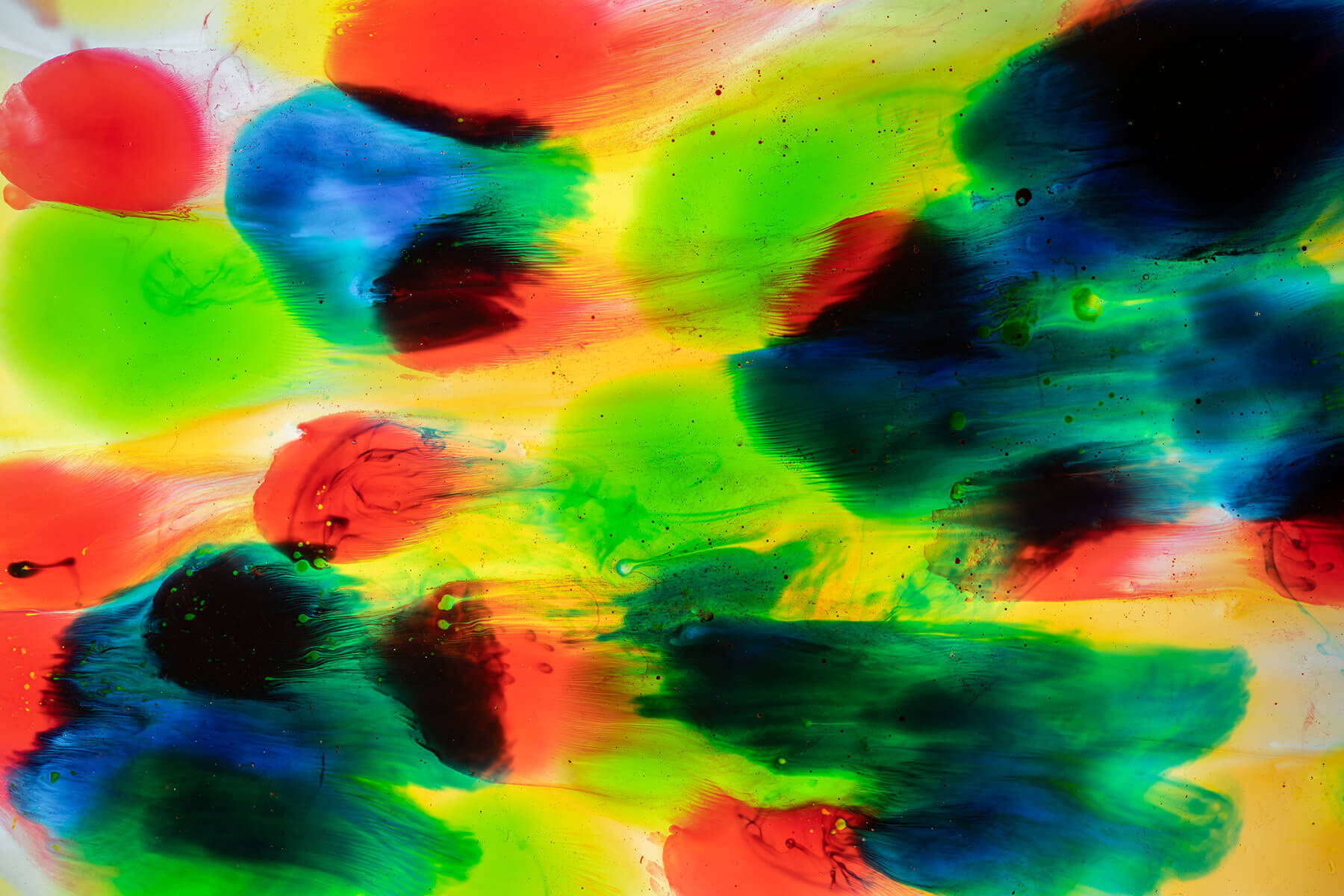
Shooting food dyes: The Photography News Podcast #1
Posted on Apr 1, 2020
Recording The Photography News Podcast inspired editor Will Cheung to come up with some photography projects to do at home during lockdown.
During the podcast I had the idea of photographing coloured food dyes dropped into water. I have to admit I hadn’t fully thought it through at the time.
I started by sorting my workspace and for this I used a garden tidy tray, which is a shallow black plastic tray about 20 sq in. This is to avoid any nasty spillages on my ‘priceless’ rug.
I decided to shoot from above to start with, so I got a shallow glass dish from the kitchen – it has the Pyrex logo on the underside so I’d have to be sure to avoid that when shooting – and as I wanted to backlight my patterns I used two plastic storage boxes to support the dish and give a couple of inches clearance.

To do the backlighting, I used a sheet of white paper to line the tray. Backlighting was plan A, with frontal lighting plan B.
On the kit side, for lighting I used a Hahnel Modus 600RT flashgun and Viper TTL trigger so I could use the flash off the camera. A wired option would work too. For shooting, I used a Nikon D810 with a 105mm macro lens. Any standard or telephoto lens with a reasonably close minimum focusing distance would work too. Whichever lens you use, I suggest manually focusing.
It’s up to you whether you use a tripod or not. On the one hand, it means you can drop dyes and shoot instantly as patterns materialise. On the other, it’s not very dynamic and doesn’t make it easy to react to the constantly evolving patterns. The ideal system is to handhold the camera and get a family member to drop the dyes.

Speaking of which, my dyes came from Morrisons and Amazon. I also found some pipettes in my first aid box to drip the food dyes, but you can just pour carefully and slowly. I had a chopstick ready to stir the colours around and a roll of kitchen towel on hand just in case.
With clean water in the dish, and the camera and flash fired up, I was ready to shoot.
I started with one colour but soon progressed to dropping in two and more colours, starting with the brighter colours first and being more generous with the number of drops and their spread. The darker colours I just dropped in the odd spot. I shot them as they entered the water and spread but the real fun began when I got gently stirring with the chopstick. The mix of colours, the trails and patterns as the dyes intermingled were wonderful – and unique.
I processed the Raws in Photoshop giving the vibrancy, saturation and clarity sliders plenty of use.

You can hear more ideas from other members of the PN team in episode one of The Photography News Podcast. Listen on the website in the podcast section, or listen on YouTube or Spotify.
Don’t forget to sign up to receive our newsletter below, and get notified about the new issue, exclusive offers and competitions.




